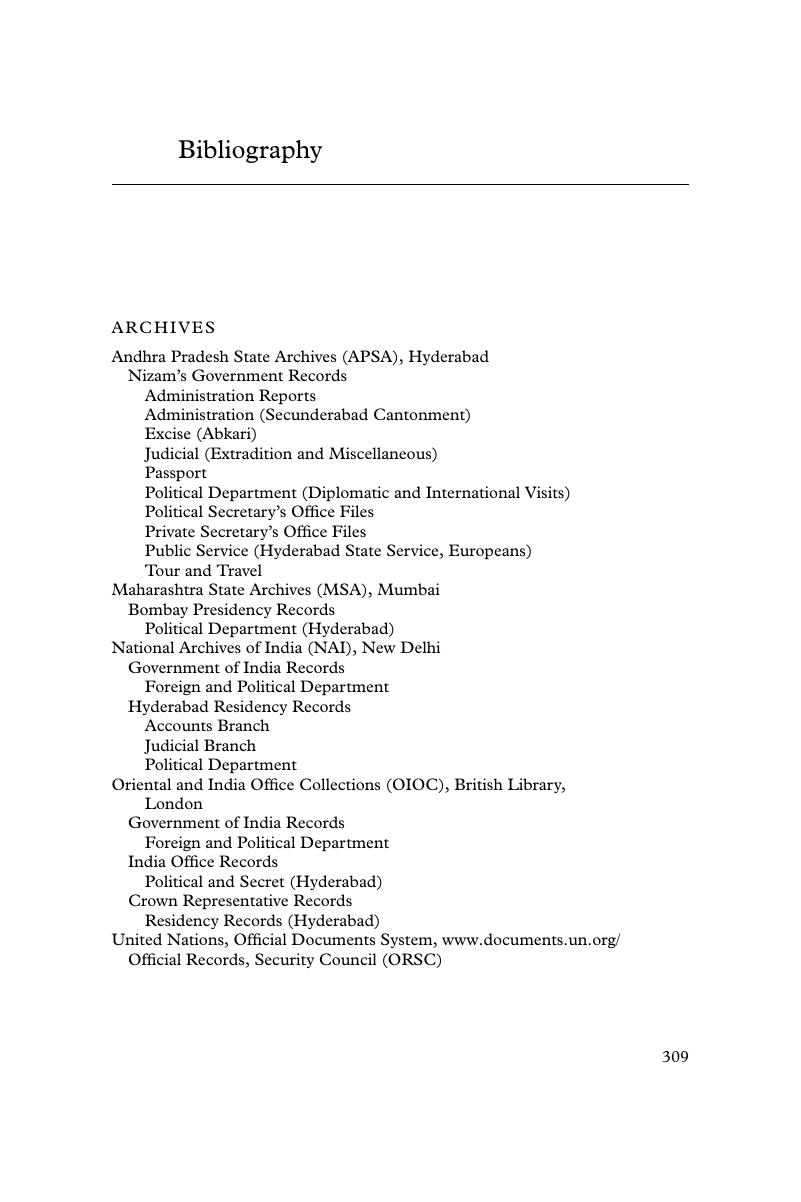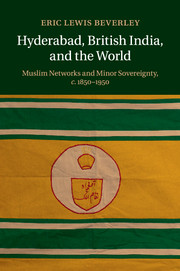Book contents
- Half title page
- Title page
- Copyright page
- Dedication
- Contents
- Contents
- Book part
- Glossary
- Map
- Introduction: fragmenting sovereignty
- 1 Minor sovereignties: Hyderabad among states and empires
- 2 The legal framework of sovereignty
- Part I Ideas
- Part II Institutions
- Part III Urban space
- Conclusion: fragmented sovereignty in a world of nation-states
- Bibliography
- Index
- References
Bibliography
Published online by Cambridge University Press: 05 August 2015
- Half title page
- Title page
- Copyright page
- Dedication
- Contents
- Contents
- Book part
- Glossary
- Map
- Introduction: fragmenting sovereignty
- 1 Minor sovereignties: Hyderabad among states and empires
- 2 The legal framework of sovereignty
- Part I Ideas
- Part II Institutions
- Part III Urban space
- Conclusion: fragmented sovereignty in a world of nation-states
- Bibliography
- Index
- References
Summary

- Type
- Chapter
- Information
- Hyderabad, British India, and the WorldMuslim Networks and Minor Sovereignty, c.1850–1950, pp. 309 - 337Publisher: Cambridge University PressPrint publication year: 2015



